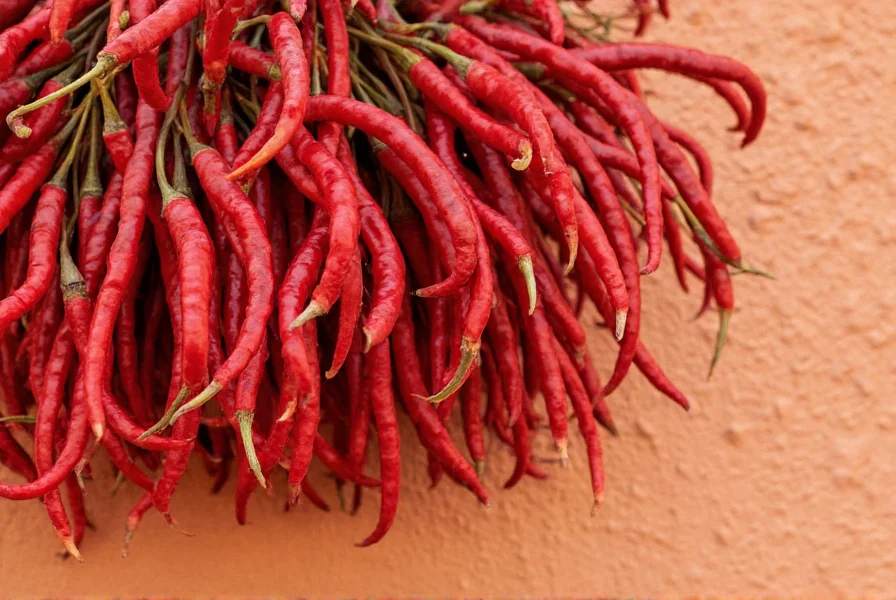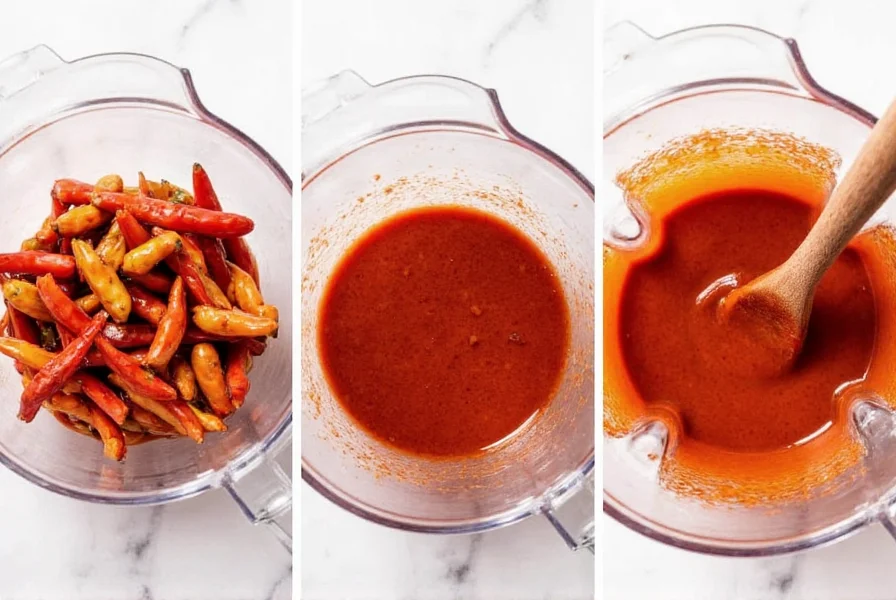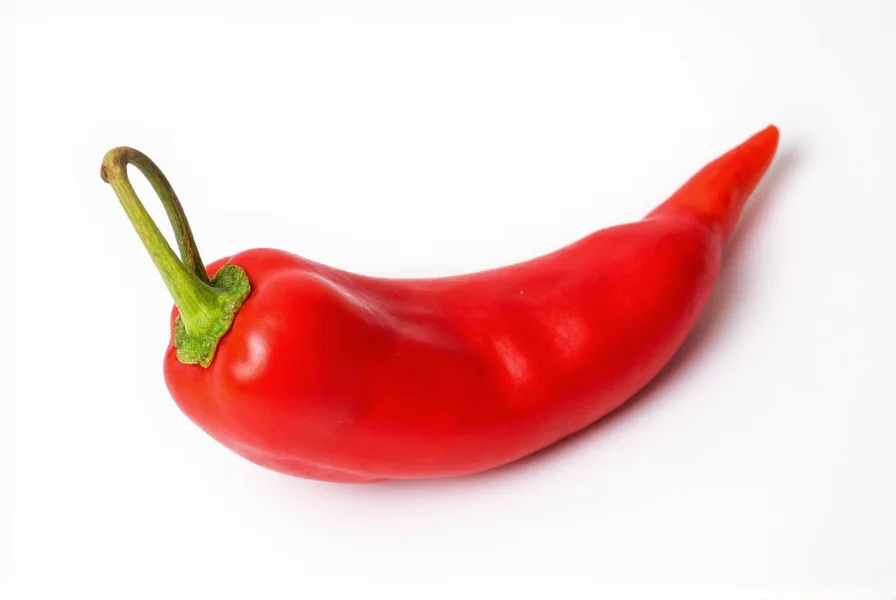Understanding the true nature of red chile pepper is essential for both culinary enthusiasts and home cooks. Unlike common misconceptions, red chile pepper isn't a single variety but represents a category of dried, fully ripened peppers primarily associated with Southwestern U.S. and Mexican cuisines. The transformation from green to red chile occurs when peppers reach full maturity on the plant, developing richer flavors and deeper color compounds.
Origin and Historical Significance
Red chile peppers trace their origins to the Americas, with cultivation dating back over 6,000 years. Indigenous peoples of New Mexico were among the first to develop specific varieties that would eventually become the foundation for what we now call New Mexico red chile. Spanish colonists introduced these peppers to Europe and Asia in the 16th century, but the distinctive Southwestern red chile tradition remained centered in what's now New Mexico and Colorado.
The term "chile" (with an "e") specifically denotes the pepper itself in Southwestern U.S. usage, distinguishing it from "chili" (with an "i"), which refers to the meat-based stew. This linguistic distinction helps clarify the red chile pepper vs chili powder confusion that often perplexes home cooks.
Characteristics and Heat Profile
Red chile peppers exhibit remarkable diversity in heat and flavor depending on variety and growing conditions. The heat level typically ranges from mild (500 Scoville units) to medium-hot (7,000 Scoville units), substantially milder than cayenne pepper (30,000-50,000 units) but noticeably spicier than sweet paprika.
| Red Chile Variety | Heat Level (SHU) | Flavor Profile | Primary Region |
|---|---|---|---|
| New Mexico No. 6 | 1,500-3,000 | Earthy, slightly sweet, raisin-like | New Mexico |
| California Red | 500-1,000 | Mild, sweet, vegetal | California |
| Guajillo | 2,500-5,000 | Berry-like, tea notes, tangy | Mexico |
| Chile de Árbol | 15,000-30,000 | Sharp, nutty, intensely hot | Mexico |
Understanding the red chile pepper heat level variations is crucial for recipe success. The drying process concentrates flavors while developing complex compounds not present in fresh peppers. As peppers ripen from green to red, their capsaicin content increases slightly, but the overall heat perception often seems milder due to the development of balancing sugars and other flavor compounds.
Distinguishing Red Chile Pepper from Similar Products
Many consumers confuse red chile pepper with other red pepper products. The critical distinction between red chile pepper vs paprika lies in their composition and origin. Authentic red chile pepper comes specifically from dried, ripe Capsicum annuum varieties grown in the American Southwest, while paprika typically derives from sweeter European pepper varieties.
Commercial "chili powder" sold nationally often contains a blend of red chile pepper, cumin, garlic powder, and other spices, making it fundamentally different from pure ground red chile. This explains why many recipes specifying "red chile" cannot be adequately substituted with generic chili powder.

Culinary Applications and Preparation
Traditional preparation of red chile involves toasting dried pods before rehydrating and blending into sauces. The toasting process (typically 30-60 seconds per side in a dry skillet) unlocks complex flavor compounds while preventing bitterness. For how to use dried red chile pepper effectively:
- Remove stems and seeds (seeds contain most heat)
- Toast lightly in dry skillet until fragrant
- Soak in hot water for 15-20 minutes until pliable
- Blend with soaking liquid and seasonings
Southwestern cuisine features red chile in iconic dishes like New Mexico red chile sauce, posole, and carne adovada. The sauce typically simmers for 20-30 minutes to develop flavor complexity while mellowing the heat. Unlike many spice applications, red chile benefits from longer cooking times that integrate its flavors rather than diminish them.
Nutritional Profile and Health Benefits
Red chile peppers offer impressive nutritional benefits beyond their flavor contribution. They're exceptionally rich in vitamin C (even after drying), containing approximately 144mg per 100g—significantly more than oranges. They also provide substantial vitamin A (from beta-carotene), potassium, and antioxidants like capsanthin that give red peppers their distinctive color.
Research suggests regular consumption of red chile pepper nutritional benefits may include improved circulation, metabolism boost, and anti-inflammatory effects. The capsaicin content, while lower than in hotter peppers, still provides these benefits without overwhelming heat for most palates.
Storage and Preservation Techniques
Proper storage maintains red chile's flavor for up to one year. Whole dried pods should be stored in airtight containers away from light and moisture. Ground red chile loses potency more quickly—typically within 3-6 months. Freezing extends shelf life significantly; many Southwestern chefs freeze whole pods or prepared red chile sauce in portion-sized containers.
Traditional preservation methods include creating ristras (dried pepper strings) which serve both decorative and practical purposes. The stringing process allows for optimal air circulation during drying while providing an attractive kitchen display that indicates when peppers have properly dried.
Substitutions and Culinary Equivalents
Finding appropriate substitutes for red chile pepper requires understanding its unique flavor profile. When determining a red chile pepper substitute, consider both heat level and flavor complexity:
- Mild applications: Sweet paprika with a pinch of cayenne (1:1 ratio)
- Medium heat: Ancho chili powder (use 25% less as it's milder)
- Authentic flavor: Guajillo powder blended with a touch of cumin
- Emergency substitute: Cayenne pepper diluted with sweet paprika (1 part cayenne to 3 parts paprika)
For recipes specifically calling for New Mexico red chile, no perfect substitute exists due to its distinctive terroir. However, combining California red chile powder with a small amount of smoked paprika can approximate its earthy-sweet profile.

Common Misconceptions Clarified
Several persistent myths surround red chile pepper. First, red chile pepper isn't the same as cayenne—cayenne is significantly hotter and has a sharper, less complex flavor. Second, not all red chile is extremely hot; many Southwestern varieties are deliberately bred for flavor over heat. Third, the color alone doesn't determine if a pepper qualifies as "red chile"—it must be fully matured and traditionally processed.
Understanding what red chile pepper is made of helps clarify these misconceptions. Authentic red chile contains only the dried, ground pepper with no additives—unlike many commercial chili powders that include fillers and additional spices. Reading ingredient labels carefully reveals whether you're purchasing pure red chile or a spice blend.
Practical Applications for Home Cooks
Integrating red chile pepper into everyday cooking requires understanding its versatility. Beyond traditional Southwestern dishes, it enhances:
- Marinades for meats (especially lamb and game)
- Roasted vegetable seasonings
- Chocolate-based sauces and desserts
- Breakfast dishes like huevos rancheros
- Bean and lentil soups for depth of flavor
When working with dried red chile pepper uses, remember that heat builds gradually. Start with smaller amounts (1-2 tablespoons per quart of liquid) and adjust after 15-20 minutes of cooking, as flavors continue to develop. The sauce should have a rich, brick-red color and coat the back of a spoon when properly prepared.
Frequently Asked Questions
What's the difference between red chile and green chile?
Red chile comes from fully matured, ripened peppers that have been dried, while green chile refers to the same pepper varieties harvested while still unripe and typically used fresh or roasted. Red chile has a deeper, earthier flavor with subtle sweetness, while green chile offers brighter, more vegetal notes with varying heat levels.
Can I substitute paprika for red chile pepper?
You can substitute sweet paprika for mild red chile pepper, but the flavor profile will differ significantly. For better results, combine sweet paprika with a small amount of cayenne pepper (1 teaspoon paprika to 1/8 teaspoon cayenne) and a pinch of cumin to approximate red chile's earthy complexity. Authentic New Mexico red chile has a distinctive flavor that's difficult to replicate exactly with substitutes.
How hot is traditional New Mexico red chile pepper?
Traditional New Mexico red chile typically ranges from 500 to 3,000 Scoville Heat Units, placing it in the mild to medium heat category. This is significantly milder than cayenne pepper (30,000-50,000 SHU) but noticeably spicier than sweet bell peppers (0 SHU). The heat level varies by specific cultivar and growing conditions, with some specialty varieties reaching up to 7,000 SHU.
How should I store red chile powder for maximum freshness?
Store red chile powder in an airtight container away from light, heat, and moisture. For best results, keep it in a cool, dark cupboard for up to 6 months. For extended storage (up to 1 year), freeze the powder in a sealed container. Avoid storing near the stove or in clear containers, as light and heat rapidly degrade both flavor and color. Whole dried peppers maintain freshness longer than ground powder.
What gives red chile pepper its distinctive flavor?
Red chile pepper's distinctive flavor comes from the combination of natural sugars that develop as the pepper ripens from green to red, complex carotenoids that create its deep color, and moderate capsaicin levels. The traditional sun-drying process concentrates these compounds while developing additional flavor notes through enzymatic reactions. Regional soil composition (terroir) in New Mexico's high desert also contributes unique mineral notes not found in peppers grown elsewhere.











 浙公网安备
33010002000092号
浙公网安备
33010002000092号 浙B2-20120091-4
浙B2-20120091-4